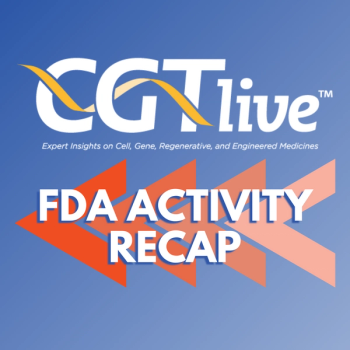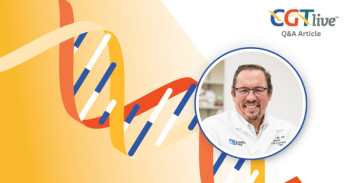
ZUMA-7 Axi-Cel Superiority Calls for Treatment Paradigm Shift in R/R LBLC
The analysis of data from ZUMA-7 demonstrated significant efficacy for axi-cel over second-line standard treatment.
Data from ZUMA-7, a multicenter phase 3 trial, demonstrated statistically significant and clinically relevant improvements in event-free survival (EFS) and response rates in patients with relapsed/refractory large B-cell lymphoma (LBLC) treated with axicabtageneciloleucel (axi-cel) versus second-line standard of care (SOC) chemoimmunotherapy.
The findings, presented at the Transplantation & Cellular Therapy Meetings of ASTCT and CIBMTR (2022 Tandem Meetings), held in Salt Lake City, Utah, and virtually April 23-26, 2022, suggest that axi-cel should be considered second-line SOC for r/r LBLC.
The data presented included findings from 359 patients who were randomly assigned to receive either axi-cel (n=180) or SOC (n=179). Participants, of whom 74% had primary refractory disease, had a median age of 59. The primary end point was event-free survival, and secondary end points included objective response rate and overall survival.
Treatment with axi-cel met the primary end point, with EFS significantly longer at 24.9 months in the axi-cel group compared with SOC (8.3 months vs 2 months, P <.0001). In addition, EFS Kaplan-Meier estimates were 41% and 16%, respectively, and objective response rates (ORR) and complete response (CR) rates were higher in the axi-cel group compared with SOC (ORR: 83% vs 50%, odds ratio: 5.31 [95% CI, 3.1-8.9; P <.0001]; CR: 65% vs 32%). Median overall survival, evaluated as an interim analysis, was not reached for axi-cel vs 35.1 months for SOC (HR 0.730; P=.027). Notably 56% of patients in the SOC arm received crossover treatment with axi-cel off-protocol.
Progression-free survival (PFS) was also superior in the axi-cel group, with median PFS 14.7 months in the axi-cel cohort compared with 3.7 months in the SOC cohort.
“This intent to treat PFS curve compares favorably to the modified intent to treat PFS curve from ZUMA-1, suggesting that efficacy of axi-cel in a second line setting may be superior to efficacy seen in a third or later line,” primary investigator Frederick Locke, MD, of Moffitt Cancer Center, said during the data presentation.
In terms of safety, 91% (axi-cel) and 83% (SOC) of patients reported Grade 3 or higher treatment-emergent adverse events (TEAEs), with 1 and 2 patient treatment-related deaths occurring in each group, respectively. Grade 3 or higher cytokine release syndrome and neurologic events ccurred in 6% and 21% of the axi-cel group, with no grade 5 events recorded.
Notably, of the 180 participants randomized to axi-cel, 170 (94%) ultimately received definitive therapy compared with 36% of the SOC arm.
Overall, axi-cel demonstrated a more than 4-fold greater median EFS, 2.5-fold greater 2-year EFS, and 2-fold greater CR rate compared with SOC.
REFERENCE
Locke FL, Miklos DB, Perales MA, et al. Primary Analysis of Zuma‑7: A Phase 3 Randomized Trial of AxicabtageneCiloleucel (Axi-Cel) Versus Standard‑of‑Care (SOC) Therapy in Patients with Relapsed/Refractory Large B-Cell Lymphoma. Presented at: Presented at: the 2022 Transplantation & Cellular Therapy Meetings; Salt Lake City, UT; April 23-26, 2022.
Newsletter
Stay at the forefront of cutting-edge science with CGT—your direct line to expert insights, breakthrough data, and real-time coverage of the latest advancements in cell and gene therapy.































